... newer stories
Montag, 12. Dezember 2016
Moray and Maras
zwinkerschaedel, 07:12h
This very touristic half day trip had three stops. First we stopped at a place where they showed us how the wool of the alpaca is traditionally processed: 1. washing of the wool with the gratings of a certain root (natural soap), 2. choosing a dye for the wool (different natural products, including the mites of the cactus that I mentioned in an earlier post), 3. the weaving process. Quite interesting but also a chance to sell their products.
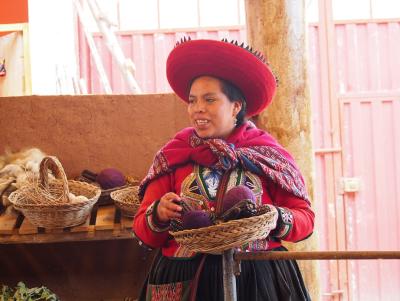
Woman explaining the the different plants used to dye the wool. Here she's holding maize morada which will give a violet.
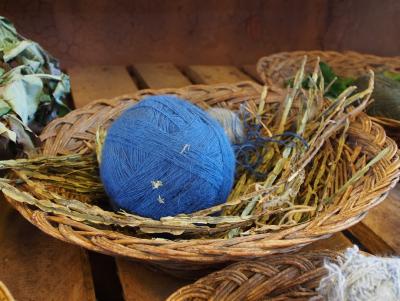
Blue wool.
Next stop were the ruins of Moray where the Inca had a "research facility" to test different ways to cultivate crops and important plants in small microclimates, especially corn, potatos and the coca plant. Stunning that through research the Inca were able to advance into a highly sophisticated Empire on the basis of developing proper food for their people!
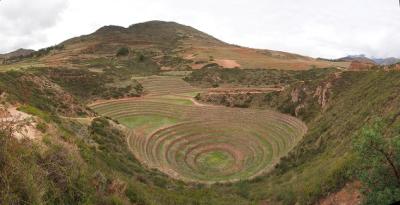
The terraces of Moray

Selfie-time again!
Last Stop were the salt terraces of Maras were the salty water coming out of the mountain is lead through intricate saline ponds to fill them with water and then to seal them of in order for the salt to cristalize once the water evaporates under the sun. Brilliant and basic at the same time!
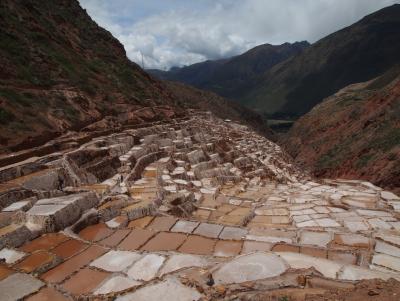
Apparently there are over 3000 salt terraces here.
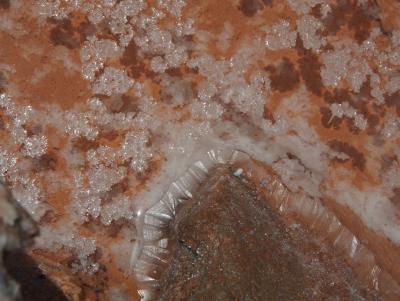
Salt crystals forming. Beautifull!!!
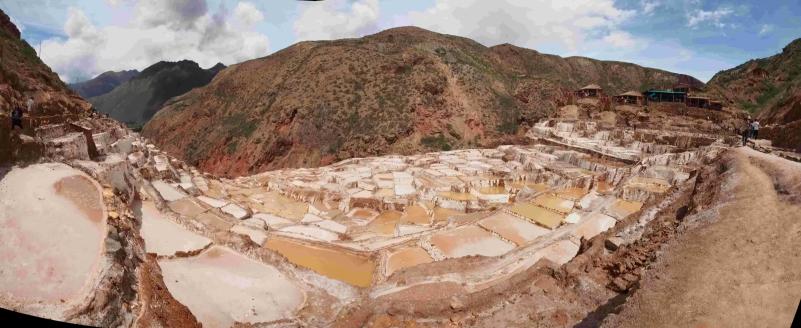
Can anyone see the glitch my Panoramic program made? Tipp: you have to open the picture itself.

Woman explaining the the different plants used to dye the wool. Here she's holding maize morada which will give a violet.

Blue wool.
Next stop were the ruins of Moray where the Inca had a "research facility" to test different ways to cultivate crops and important plants in small microclimates, especially corn, potatos and the coca plant. Stunning that through research the Inca were able to advance into a highly sophisticated Empire on the basis of developing proper food for their people!

The terraces of Moray

Selfie-time again!
Last Stop were the salt terraces of Maras were the salty water coming out of the mountain is lead through intricate saline ponds to fill them with water and then to seal them of in order for the salt to cristalize once the water evaporates under the sun. Brilliant and basic at the same time!

Apparently there are over 3000 salt terraces here.

Salt crystals forming. Beautifull!!!

Can anyone see the glitch my Panoramic program made? Tipp: you have to open the picture itself.
... link (0 Kommentare) ... comment
Rainbow Mountains
zwinkerschaedel, 06:29h
The Rainbow mountains is a rather "new" (for roughly two years, not mentioned in lonely planet yet) tourist attraction and has only been "rediscovered" due to melting snow and glacier caps that used to cover these parts of the mountains. The different colors result from different sediments of minerals (e.g. green = copper). These mountains are quite high and I've never pushed my limits so far. You get picked up @ 3 a.m. driving three hours to have breakfast before starting the journey. The starting point of the hike is roughly at 4300m and you hike for about 3h to the top at 5100m. The way up I did it all by myself but I ended up being one of the last ones in the group even though I didn't take that many pictures and I was thoroughly drained at the top. For the first half hour we had sun, but after that it got cloudy and near the top it even snowed slightly (not enough to stay on the ground). Being one of the last ones at the top I was rather rushed by the guides to return back and couldn't take my time for the fotos. I can tell you though that the place is pretty spectacular (if the fotos don't convince you).
To save time and to save my knees I took a horse for the way down (50 Soles, roughly 14 Euros) which was quite a pleasant experience. If I decide to go there again I would take a horse the way up. In summary a very interesting trip both for the scenery and also for getting to know the limits that I can push my body. This was the first time hiking above 4000m and the first time ever being above 5000m.

Beautiful landscape!
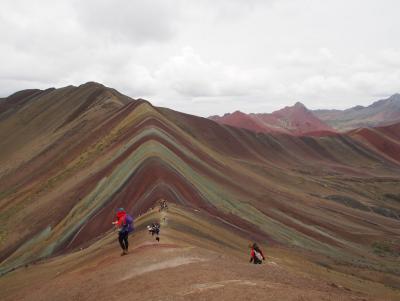
The top of the famous Rainbow Mountains
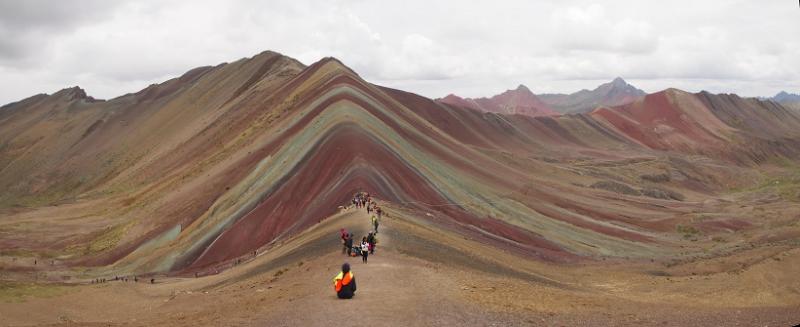
Panoramic view (you might have to view the picture in the pictures section to view it in full)
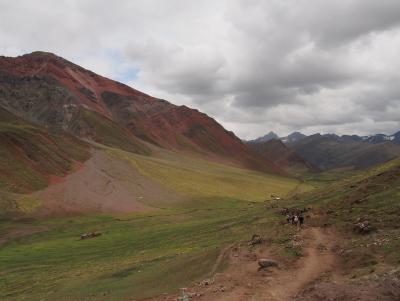
Already on the way the colors of the mountains are quite stunning!
To save time and to save my knees I took a horse for the way down (50 Soles, roughly 14 Euros) which was quite a pleasant experience. If I decide to go there again I would take a horse the way up. In summary a very interesting trip both for the scenery and also for getting to know the limits that I can push my body. This was the first time hiking above 4000m and the first time ever being above 5000m.

Beautiful landscape!

The top of the famous Rainbow Mountains

Panoramic view (you might have to view the picture in the pictures section to view it in full)

Already on the way the colors of the mountains are quite stunning!
... link (0 Kommentare) ... comment
Cusco
zwinkerschaedel, 06:17h
I have already been one week in Cusco and still haven't posted anything about Cusco. I arrived last week saturday morning and was brought to a host family here in Cusco. I changed the family the next day because I didn't feel welcome at all and they didn't have internet. The new host family was a lot more welcoming.
The language school here is quite good with the teachers being almost as good as in Arequipa but with more activities (wednesday: food night where we went to a restaurant together; thursday: salsa class and friday: sometimes small cooking class). All together a good choice.
Cusco itself is a very touristic place with lots of stuff to do in the area. You can find tour operators on every corner close to the main square, the Plaza de Armas. This is also a shoppers dream for souveniers. Especially wool clothing in different qualities and price ranges (sadly you are being ripped off quite some times if you don't know the real value). I'm a bit sad that this is the beginning of my trip because I would do some serious souvenir shopping here if I didn't have to take all of it along for another two months... But maybe it's better this way.
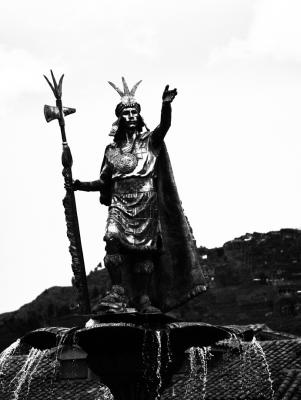
This is a statue standing in the middle of a fountain in the main square Plaza de Armas.
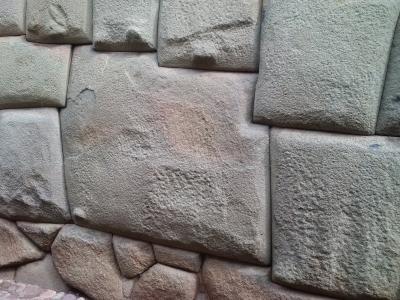
This is the famous twelve-angled stone in one of the small alleys of Cusco. It shows the great craftsmanship the Incas had to exacty fit this stone into a wall.

These are the ruins os Sacsayhuaman on one of the hills of Cusco. Unfortunately the Spanish destroyed it partly to pilfer the stones in order to build their own Churches and Cathedral.
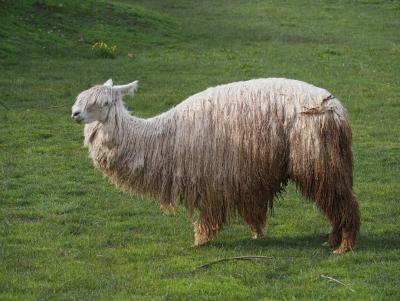
Either a Lama or a mix between Alpaca and Lama.

Cusco from a lookout at Sacsayhuaman
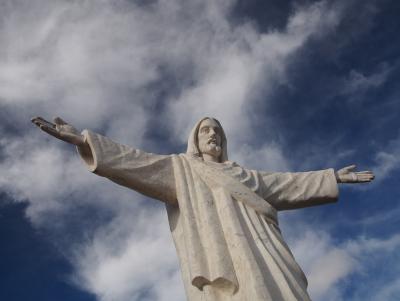
Cristo Blanco is a Statue right next to Sacsayhuaman and is beautifully lit up at night to be seen at the Plaza de Armas.

The Volkswagen Beetle is a very common car here. I easily counted 15-20 in one day walking only a bit around.
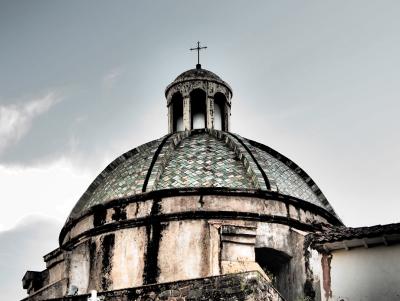
The General Cemetary of Almudena is a curious place for us Europeans. The way how death and burial is dealt with is different and sometimes (at least for me) comical. The sites where the urns are kept have a small showcase that the family would fill with however they want the beloved one to be remembered. That usually includes a photo of the beloved one and some religeous figure, e.g. of a saint or of one of the Marys (different versions of Mary exist here to deal with the different aspects of her life and the meaning to christianity). But it usually also includes things the person liked (quite often a miniature bottle of beer) and some sort of moving thing. These are usually solar-powered smal figures of ducks, flowers, santa clause, etc that bob their head or wiggle in some sort of way. Very funny!!!
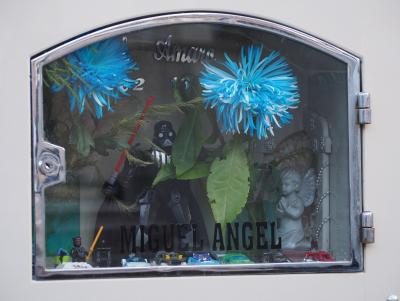
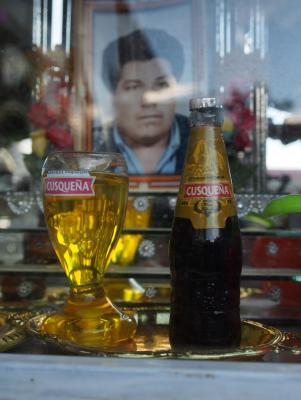
This guy apparently loved his Cusquena (a local beer brand).
The language school here is quite good with the teachers being almost as good as in Arequipa but with more activities (wednesday: food night where we went to a restaurant together; thursday: salsa class and friday: sometimes small cooking class). All together a good choice.
Cusco itself is a very touristic place with lots of stuff to do in the area. You can find tour operators on every corner close to the main square, the Plaza de Armas. This is also a shoppers dream for souveniers. Especially wool clothing in different qualities and price ranges (sadly you are being ripped off quite some times if you don't know the real value). I'm a bit sad that this is the beginning of my trip because I would do some serious souvenir shopping here if I didn't have to take all of it along for another two months... But maybe it's better this way.

This is a statue standing in the middle of a fountain in the main square Plaza de Armas.

This is the famous twelve-angled stone in one of the small alleys of Cusco. It shows the great craftsmanship the Incas had to exacty fit this stone into a wall.

These are the ruins os Sacsayhuaman on one of the hills of Cusco. Unfortunately the Spanish destroyed it partly to pilfer the stones in order to build their own Churches and Cathedral.

Either a Lama or a mix between Alpaca and Lama.

Cusco from a lookout at Sacsayhuaman

Cristo Blanco is a Statue right next to Sacsayhuaman and is beautifully lit up at night to be seen at the Plaza de Armas.

The Volkswagen Beetle is a very common car here. I easily counted 15-20 in one day walking only a bit around.

The General Cemetary of Almudena is a curious place for us Europeans. The way how death and burial is dealt with is different and sometimes (at least for me) comical. The sites where the urns are kept have a small showcase that the family would fill with however they want the beloved one to be remembered. That usually includes a photo of the beloved one and some religeous figure, e.g. of a saint or of one of the Marys (different versions of Mary exist here to deal with the different aspects of her life and the meaning to christianity). But it usually also includes things the person liked (quite often a miniature bottle of beer) and some sort of moving thing. These are usually solar-powered smal figures of ducks, flowers, santa clause, etc that bob their head or wiggle in some sort of way. Very funny!!!


This guy apparently loved his Cusquena (a local beer brand).
... link (0 Kommentare) ... comment
Food
zwinkerschaedel, 05:49h
As many of you know I do like good food and I've been having plenty of that here in Peru so far.
My favorite so far has been Ceviche, a traditional fish dish where pieces of raw fish are marinated in lime juice and spices for a while. The acid of the lime juice denaturates the fish with the result of it almost being "cooked". Real yummy!
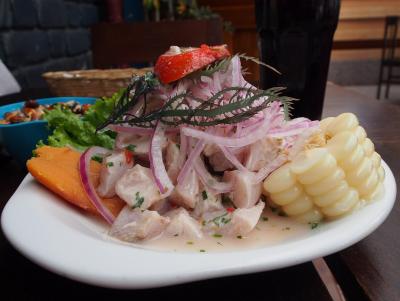
Ceviche in Cusco
The other famous dish is of course the "cuy" (guinea pig). I tried this in a local Picanteria in Cusco and it tasted quite nice. Not special enough to make my most favorite list but good.
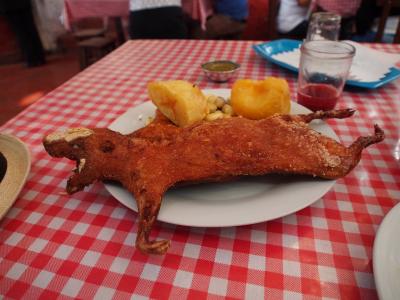
Usually the whole cuy is prepared, sometimes even with the intestines (thoroughly cleaned before, I hope) filled with stuff (e.g. potatos)
This is a special kind of corn used to make a very delicios non-alcoholic drink: Chicha morada
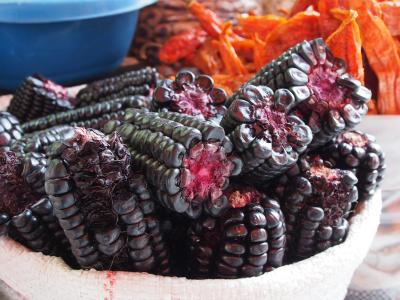
The corn is cooked in water together with spices (e.g. cloves & cinnamon) and then sugar (or another sweetener) and lemon juice is added. Very refreshing!
Other good peruvian foods have been Choclo con Queso (huge white corn served together with cheese), Lomo saltado (meat sautéed together with peppers, onions and spices, served with rice or fries), Chicharron de Chancho (deep fried pork), Rocotto releno (spicy pepper stuffed with meat, cheese, etc. served with potato-cheese-casserole, of course the before mentioned Aticuchos (thin slices of beef heart barbecued on saté sticks) and realy yummy broth soups (e.g. with Quinoa).
My favorite so far has been Ceviche, a traditional fish dish where pieces of raw fish are marinated in lime juice and spices for a while. The acid of the lime juice denaturates the fish with the result of it almost being "cooked". Real yummy!

Ceviche in Cusco
The other famous dish is of course the "cuy" (guinea pig). I tried this in a local Picanteria in Cusco and it tasted quite nice. Not special enough to make my most favorite list but good.

Usually the whole cuy is prepared, sometimes even with the intestines (thoroughly cleaned before, I hope) filled with stuff (e.g. potatos)
This is a special kind of corn used to make a very delicios non-alcoholic drink: Chicha morada

The corn is cooked in water together with spices (e.g. cloves & cinnamon) and then sugar (or another sweetener) and lemon juice is added. Very refreshing!
Other good peruvian foods have been Choclo con Queso (huge white corn served together with cheese), Lomo saltado (meat sautéed together with peppers, onions and spices, served with rice or fries), Chicharron de Chancho (deep fried pork), Rocotto releno (spicy pepper stuffed with meat, cheese, etc. served with potato-cheese-casserole, of course the before mentioned Aticuchos (thin slices of beef heart barbecued on saté sticks) and realy yummy broth soups (e.g. with Quinoa).
... link (0 Kommentare) ... comment
... older stories